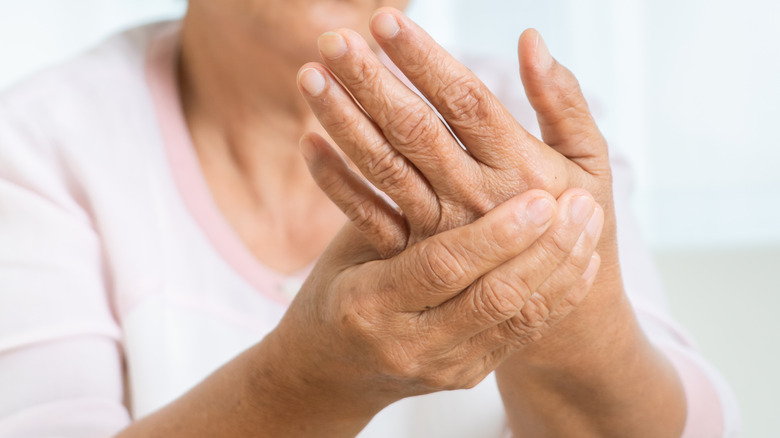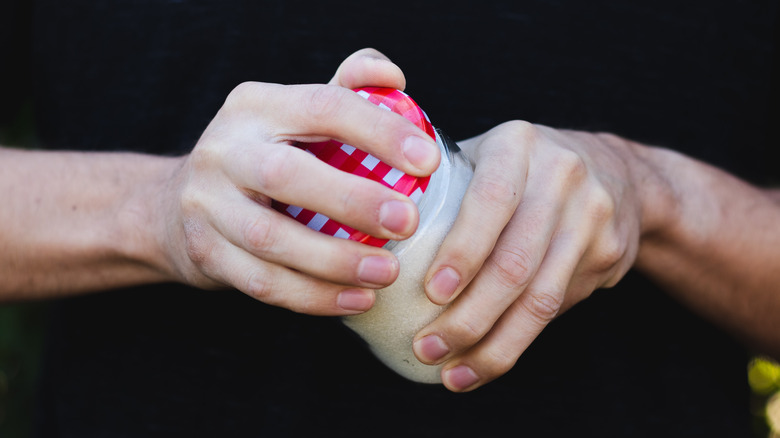The Surprising Way Researchers Are Using Lipofilling To Treat Osteoarthritis
Osteoarthritis is the most common disorder of the joints, and many people experience this condition in their fingers (per the Cleveland Clinic). Along with pain and swelling, osteoarthritis limits the ability to do simple tasks, like opening a jar. Arthritis is basically the result of wear and tear on our joints, and while doctors can treat pain with medication, there is no cure for the condition, per the Harvard Medical School. New research, however, suggests that doctors may be able to change all of that with a simple procedure.
A report published in the journal Plastic and Reconstructive Surgery showed that patients suffering from arthritis saw a significant reduction in pain by undergoing a process called lipofilling, which involves transferring fat from one part of the body to another. The small study took place between December 2014 and May 2015, and it involved 18 patients with an average age of 60.8. Of the patients, 15 were male and 13 were female. Doctors removed fatty tissue from the patients' thighs or buttocks and injected it into 28 finger joints to see if it improved their osteoarthritis.
Patients experienced less pain and more mobility
The severity of osteoarthritis in the joints was measured according to the Kellgren-Lawrence scale, which is used to measure pain associated with osteoarthritis (via the McMaster Textbook of Internal Medicine). Of the 28 joints that were injected, 12 joints were a grade three, eight were grade two, and five were a grade four. Patients also measured their pain on a scale of one through 10. At the beginning of the study, patients said their pain averaged about a level six; after the study, pain dropped to 0.5. Patients also saw improvements in grip strength, the ability to close their fists, and general hand functions. In addition, none of the participants experienced complications.
While there was no control group, the authors of the study reported that after 44 months, the procedure — which is minimally invasive — proved to be a "safe and promising alternative to conventional surgical techniques." They also noted that more long-term studies were needed to support the findings.

